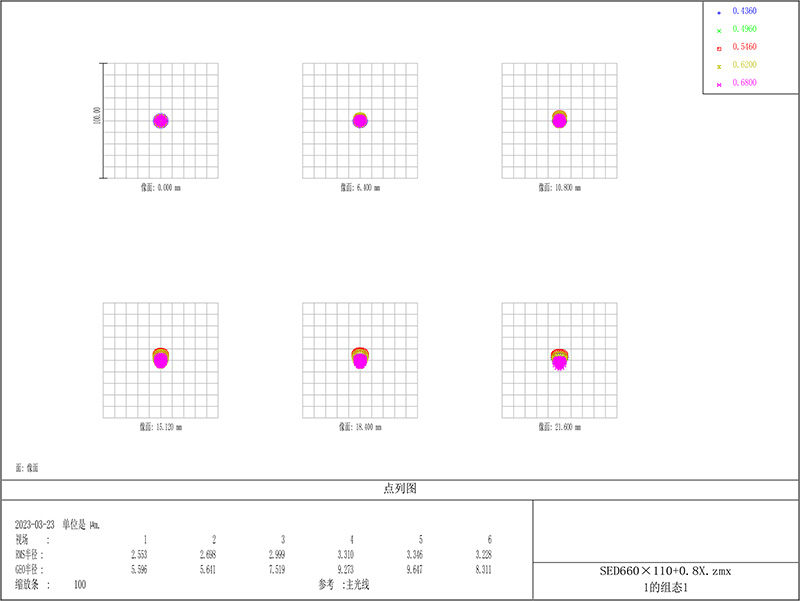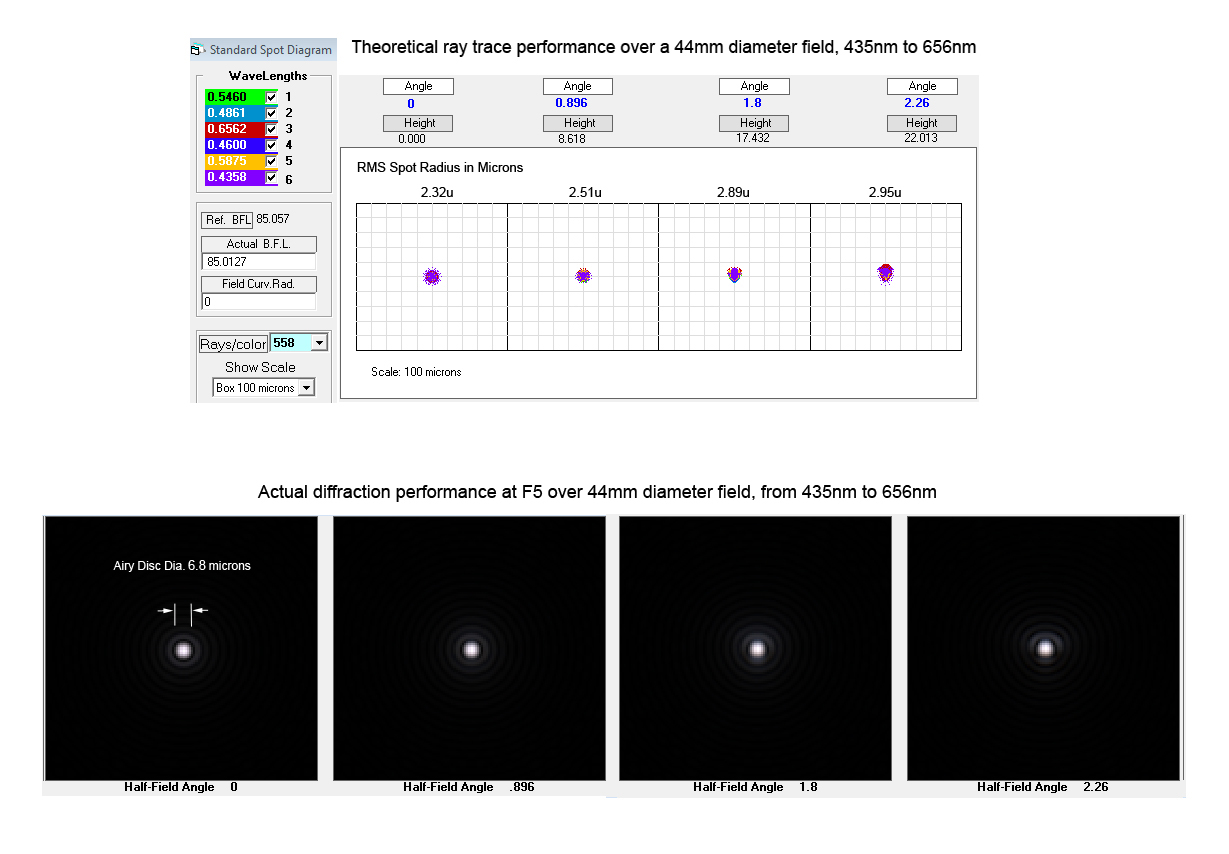Very few in the wild. However, there are some comments that it is the closest readily available design to the recent AP 110 GTX in terms of triplet types and reducer structure. I think there are some images from DeepLab, a consortium in Italy and here on AB that use the Tecnosky version.
I have no first hand experience with these scopes, but its matched quad reducer + triplet was designed with the likes of the IMX455 sensor in mind. Its correction with that sensor looks very good. Spots and related are as follows:

No indication of airy size, longitudinal correction, spherochromatism or secondary spectrum details, which AP show for theirs. I cannot make out if the box side dimension is 200 or 100 um. The AP 110 GTX spots for comparison as as follows, which is clearly an optimized version, likely with some design difference but that is speculation on my part. both use the same glass, not sure of the quality selection in terms of inclusions, amorphous uniformity, dispersion etc., but I assume there is a considerable difference in many aspects of the AP scope.





